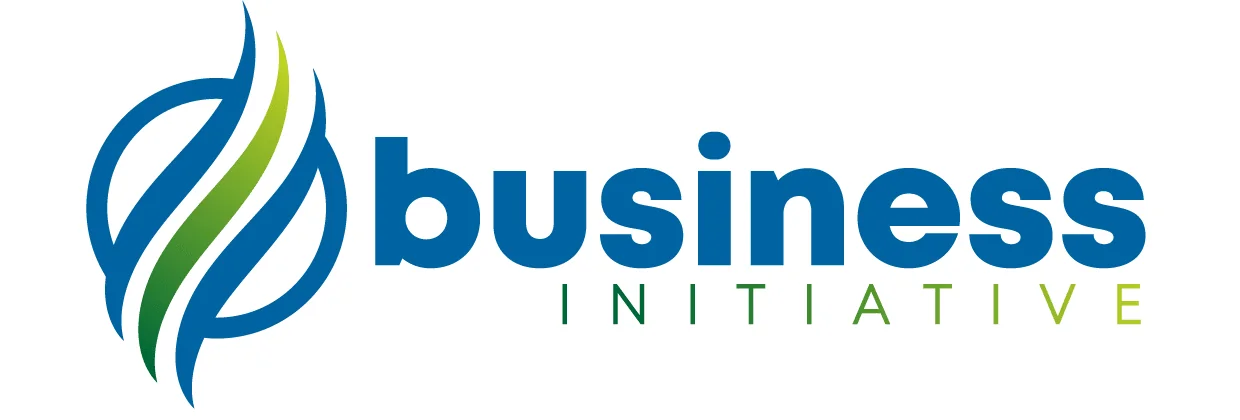Understanding your business survival probability is crucial for strategic planning, risk management, and stakeholder confidence. This comprehensive metric combines financial health, market position, and operational resilience to provide a realistic assessment of your business’s ability to navigate challenges and achieve long-term sustainability.
Whether you’re planning for economic uncertainty, preparing investor presentations, evaluating strategic options, or developing contingency plans, survival probability analysis provides the insights needed to make informed decisions about risk mitigation, resource allocation, and strategic positioning.
Our comprehensive survival probability calculator not only assesses your current resilience but also provides strategic insights into risk factors, improvement opportunities, and scenario planning to help you strengthen your business foundation and increase your probability of long-term success.
 Table of Contents
Table of Contents
 Key Takeaways
Key Takeaways
- Assess comprehensive business resilience
- Identify critical risk factors early
- Plan effective risk mitigation strategies
- Strengthen competitive positioning
- Make informed strategic decisions
Quick Reference: Survival Probability Risk Factors
| Risk Category | High Risk Indicators | Medium Risk Indicators | Low Risk Indicators |
|---|---|---|---|
| Financial Health | < 3 months runway | 3-12 months runway | 12+ months runway |
| Revenue Growth | Declining revenue | Flat or slow growth | Consistent 20%+ growth |
| Market Position | Losing market share | Maintaining position | Gaining market share |
| Customer Base | High churn, concentration | Stable but limited | Diverse, growing, loyal |
Understanding Survival Probability
Risk Assessment
Evaluate comprehensive business risks across financial, operational, and strategic dimensions
Strategic Planning
Make informed decisions about resource allocation and strategic priorities
Resilience Building
Identify and strengthen weak points to improve long-term sustainability
Scenario Planning
Prepare for different market conditions and business scenarios
Survival probability calculation considers:
- Financial Metrics: Cash runway, burn rate, revenue growth, and profitability trends
- Market Factors: Competition, market size, growth rate, and positioning
- Operational Strength: Team quality, systems, processes, and scalability
- Strategic Assets: Intellectual property, partnerships, and competitive advantages
How to Use This Calculator
Quick Start Guide
Input Financial Data
Enter current runway, growth rate, and revenue metrics
Assess Market Position
Evaluate competitive position and market dynamics
Calculate Probability
Get your comprehensive survival probability score
Plan Improvements
Use insights to strengthen business resilience
Risk Factor Analysis
Survival Recommendations
Interpreting Your Results
Understanding your survival probability helps guide strategic decisions:
Probability Score Ranges
High Survival Probability (80-100%)
- Strong financial position with adequate runway
- Growing revenue and improving unit economics
- Solid market position with competitive advantages
- Diversified customer base and revenue streams
- Focus on scaling and market expansion
Moderate Survival Probability (60-80%)
- Stable financial position with some concerns
- Steady revenue but limited growth
- Competitive market position but vulnerable
- Some customer concentration or operational risks
- Focus on strengthening weak areas
Low Survival Probability (40-60%)
- Financial challenges requiring attention
- Declining or stagnant revenue trends
- Weak competitive position
- High customer concentration or churn
- Immediate action needed for improvement
Critical Survival Risk (Below 40%)
- Severe financial distress
- Declining business fundamentals
- Poor market position and prospects
- Multiple critical risk factors
- Emergency measures required
Key Risk Factors
Financial Risks:
- Short runway (less than 6 months)
- High burn rate without revenue growth
- Poor unit economics or declining margins
- Limited access to additional funding
Market Risks:
- Declining market or industry disruption
- Intense competition with limited differentiation
- Customer concentration or high churn
- Regulatory or technology threats
Operational Risks:
- Key person dependencies
- Inadequate systems or processes
- Quality or delivery issues
- Limited scalability or capacity
Risk Mitigation Strategies
Financial Risk Mitigation
1. Cash Flow Optimization
- Accelerate revenue collection and reduce payment terms
- Optimize expenses and eliminate non-essential costs
- Negotiate better payment terms with suppliers
- Consider alternative funding sources (revenue-based, asset-based)
2. Revenue Diversification
- Develop multiple revenue streams and customer segments
- Reduce dependence on major customers
- Explore new markets or product extensions
- Implement recurring revenue models
3. Unit Economics Improvement
- Optimize pricing strategies and value propositions
- Reduce customer acquisition costs
- Improve customer lifetime value and retention
- Focus on high-margin products and services
Market Risk Mitigation
1. Competitive Positioning
- Develop unique value propositions and differentiation
- Build strong brand recognition and customer loyalty
- Invest in innovation and product development
- Create barriers to entry and switching costs
2. Market Expansion
- Diversify across geographic markets
- Target multiple customer segments
- Develop partnerships and distribution channels
- Explore adjacent markets and opportunities
3. Customer Relationship Management
- Implement customer success and retention programs
- Develop long-term contracts and partnerships
- Create customer advisory boards and feedback loops
- Focus on customer satisfaction and value delivery
Operational Risk Mitigation
1. Team and Leadership
- Develop strong management team and board
- Reduce key person dependencies
- Implement succession planning and cross-training
- Build advisory relationships and mentorship
2. Systems and Processes
- Implement scalable systems and technology
- Develop standard operating procedures
- Create quality control and monitoring systems
- Build redundancy and backup systems
3. Strategic Assets
- Develop intellectual property and trade secrets
- Build strategic partnerships and alliances
- Create network effects and platform advantages
- Invest in brand and reputation building
Building Business Resilience
Financial Resilience
Cash Management:
- Maintain adequate cash reserves (6-18 months)
- Diversify funding sources and maintain credit lines
- Implement robust financial planning and forecasting
- Monitor key financial metrics and ratios
Revenue Stability:
- Build recurring and predictable revenue streams
- Develop long-term customer relationships
- Create multiple revenue sources and segments
- Focus on customer lifetime value optimization
Cost Structure Optimization:
- Balance fixed and variable costs for flexibility
- Implement cost controls and monitoring systems
- Negotiate favorable terms with key suppliers
- Maintain operational efficiency and productivity
Market Resilience
Competitive Advantages:
- Develop sustainable competitive moats
- Build strong brand and customer loyalty
- Create network effects and switching costs
- Invest in innovation and differentiation
Market Position:
- Maintain strong market share in key segments
- Build relationships with key stakeholders
- Monitor competitive landscape and trends
- Adapt quickly to market changes
Customer Relationships:
- Develop deep customer relationships and partnerships
- Focus on customer success and satisfaction
- Create customer advocacy and referral programs
- Build diverse customer base across segments
Operational Resilience
Team Strength:
- Build experienced and capable management team
- Develop strong company culture and values
- Implement effective governance and oversight
- Create learning and development programs
Systems and Infrastructure:
- Invest in scalable technology and systems
- Implement robust security and backup systems
- Create efficient processes and workflows
- Build quality control and monitoring capabilities
Strategic Planning:
- Develop clear vision and strategic plans
- Implement regular strategy review and updates
- Create scenario planning and contingency plans
- Build strategic partnerships and alliances
Industry-Specific Considerations
Technology Companies
Key Success Factors:
- Product-market fit and customer traction
- Scalable technology platform and architecture
- Strong intellectual property portfolio
- Experienced technical and management team
Common Risk Factors:
- Technology obsolescence or disruption
- Intense competition and fast market changes
- High customer acquisition costs
- Dependence on key technical personnel
Retail and E-commerce
Key Success Factors:
- Strong brand and customer loyalty
- Efficient supply chain and operations
- Effective marketing and customer acquisition
- Diverse product portfolio and suppliers
Common Risk Factors:
- Seasonal variations and economic sensitivity
- Inventory management and working capital
- Competition from large platforms
- Changing consumer preferences
Service Businesses
Key Success Factors:
- Strong client relationships and retention
- Experienced and skilled team
- Efficient delivery processes and quality
- Diverse client base and service offerings
Common Risk Factors:
- Key person dependencies
- Client concentration and project risks
- Capacity constraints and scalability
- Economic sensitivity and pricing pressure
Manufacturing Companies
Key Success Factors:
- Efficient production processes and quality
- Strong supplier relationships and supply chain
- Product innovation and differentiation
- Market position and distribution channels
Common Risk Factors:
- Capital intensity and fixed costs
- Raw material price volatility
- Regulatory and environmental compliance
- Competition from low-cost producers
Need help improving your business survival probability and building resilience? Schedule a consultation with our strategic planning experts at Business Initiative.
Stay informed about business strategies and tools by following us on X (Twitter) and subscribing to our newsletter.
FAQs - Frequently Asked Questions About Survival Probability

What factors most influence business survival probability?
Financial health (cash runway, profitability), market position (competitive advantages, customer loyalty), operational strength (team quality, systems), and strategic assets (IP, partnerships) are the primary factors.
Cash runway and revenue growth typically have the highest impact on short-term survival probability.
Learn More...
Business survival probability is determined by multiple interconnected factors that assess your company's resilience and ability to navigate challenges.
Financial metrics carry the most weight, particularly cash runway which determines how long you can operate without additional funding.
Revenue growth rate indicates market acceptance and business momentum, while profitability trends show your path to sustainability.
- Cash runway and burn rate (40% of survival probability)
- Revenue growth and customer retention (30% of survival probability)
- Market position and competitive advantages (20% of survival probability)
- Operational efficiency and team strength (10% of survival probability)
Strategic assets like intellectual property, exclusive partnerships, and strong brand recognition provide additional protection against market disruption.
Companies with diversified revenue streams, strong customer relationships, and efficient operations consistently show higher survival rates across economic cycles.
How accurate are survival probability calculations?
Survival probability models provide directional guidance rather than precise predictions.
They're most accurate for identifying relative risk levels and trends.
Learn More...
Survival probability calculations are statistical models that analyze historical patterns and current business metrics to estimate future outcomes.
These models typically achieve 70-80% accuracy for short-term predictions (6-12 months) and 60-70% accuracy for longer-term forecasts.
The accuracy depends heavily on the quality of input data and the stability of market conditions.
- Most accurate for established businesses with consistent operating history
- Less reliable for startups or companies in rapidly changing markets
- External factors like economic downturns or industry disruption can significantly impact actual outcomes
- Regular updates with new data improve prediction accuracy over time
Rather than treating these as absolute predictions, use survival probability as a risk assessment tool to guide strategic decisions and identify areas for improvement.
What survival probability score should I aim for?
Aim for 70%+ survival probability for healthy operations.
Scores above 80% indicate strong resilience, while scores below 60% suggest significant risks requiring immediate attention.
Learn More...
Survival probability targets vary by industry, growth stage, and market conditions, but general benchmarks provide useful guidance.
Companies with 80-100% survival probability demonstrate exceptional resilience with strong financial positions, diversified revenue, and competitive advantages.
Scores of 70-80% indicate solid business foundations with manageable risks and clear paths to improvement.
- Technology companies: Target 75-85% due to higher volatility
- Manufacturing businesses: Target 70-80% due to capital intensity
- Service businesses: Target 80-90% due to lower capital requirements
- Retail/E-commerce: Target 65-75% due to seasonal variations
Scores below 60% require immediate strategic intervention, including cash flow improvements, cost reduction, or market repositioning.
Early-stage companies may operate at lower survival probabilities while building market traction, but should prioritize reaching 70%+ as quickly as possible.
How often should I calculate survival probability?
Calculate quarterly for stable businesses and monthly during periods of change or uncertainty.
Update immediately after major events like funding rounds, significant customer wins/losses, or market changes.
Learn More...
The frequency of survival probability calculations should align with your business volatility and growth stage.
Established companies with predictable operations can calculate quarterly as part of regular board reporting and strategic planning.
High-growth startups or companies in transition should calculate monthly to track progress and identify emerging risks early.
- Weekly calculations during crisis periods or major transitions
- Monthly for startups, rapid growth phases, or uncertain market conditions
- Quarterly for established businesses with stable operations
- Annual comprehensive reviews with detailed scenario analysis
Trigger immediate recalculation after significant events such as major customer acquisitions or losses, funding rounds, key personnel changes, or market disruptions.
Regular monitoring helps identify trends and patterns that might not be apparent in isolated calculations, enabling proactive management of risk factors.
What if my survival probability is low?
Focus on the highest-impact improvements: extend cash runway, accelerate revenue growth, reduce customer concentration, and strengthen competitive position.
Consider strategic options like partnerships, acquisitions, or pivot strategies.
Learn More...
Low survival probability requires immediate, systematic action across multiple business dimensions to address underlying weaknesses.
Start with cash flow improvements as these provide the most immediate impact on survival odds.
Extend runway through cost optimization, accelerated collections, or emergency financing to buy time for strategic improvements.
- Immediate cash flow actions (0-30 days): Cut non-essential expenses, accelerate invoicing, negotiate payment terms
- Revenue acceleration (30-90 days): Focus on high-probability sales, implement retention programs, explore new revenue streams
- Strategic improvements (90+ days): Strengthen competitive position, diversify customer base, build operational efficiency
- Contingency planning: Prepare for potential scenarios including partnerships, acquisitions, or controlled wind-down
Seek professional advice from business advisors, accountants, or turnaround specialists who can provide objective assessment and strategic guidance.
Consider strategic alternatives such as mergers with complementary businesses, licensing agreements, or pivoting to more sustainable business models.
How do external factors affect survival probability?
Economic conditions, industry trends, regulatory changes, and technological disruption significantly impact survival probability.
Build resilience through diversification, scenario planning, and maintaining flexibility to adapt to external changes.
Learn More...
External factors often have more impact on business survival than internal operations, making environmental awareness crucial for accurate probability assessment.
Economic cycles affect customer spending patterns, access to financing, and competitive intensity, with downturns typically reducing survival probability by 10-30%.
Industry-specific factors such as regulatory changes, technological disruption, or supply chain issues can dramatically alter survival odds.
- Economic factors: Recession, inflation, interest rates, employment levels
- Industry trends: Market growth, consolidation, disruption, regulatory changes
- Competitive dynamics: New entrants, pricing pressure, market share shifts
- Technology changes: Automation, digital transformation, platform shifts
Build resilience by monitoring leading indicators of change, maintaining financial flexibility, and developing contingency plans for different scenarios.
Companies that actively track external factors and adapt their strategies accordingly show 20-40% higher survival rates during periods of significant change.
Should I share survival probability with investors?
Use survival probability analysis to demonstrate thorough risk management and strategic thinking.
Present it as part of comprehensive risk assessment and mitigation planning.
Learn More...
Survival probability analysis can be a powerful tool for investor communication when presented professionally and strategically.
Investors appreciate data-driven risk assessment and proactive management approaches, especially when combined with clear improvement plans.
Frame the discussion around risk management and strategic planning rather than just the probability score itself.
- Present alongside scenario analysis and contingency planning
- Highlight improvement strategies and progress tracking
- Demonstrate understanding of key risk factors and mitigation approaches
- Show how the analysis informs strategic decision-making and resource allocation
Use the analysis to justify funding needs, strategic pivots, or operational changes with data-backed reasoning.
Transparency about risks and proactive management builds investor confidence and can lead to better support during challenging periods.
Can survival probability improve quickly?
Some factors improve quickly (cash position through funding, customer wins), while others take time (market position, operational systems).
Focus on high-impact, quick wins first, then build long-term resilience.
Learn More...
Survival probability improvement speed depends on which factors you can influence and how quickly changes take effect.
Financial improvements can happen rapidly through fundraising, major sales wins, or significant cost reductions, potentially improving survival probability by 20-50% within 30-90 days.
Market position and competitive advantages take longer to build but provide more sustainable improvements over 6-18 months.
- Quick wins (30-90 days): Cash infusion, major customer wins, cost reductions, payment term improvements
- Medium-term improvements (3-12 months): Revenue growth, operational efficiency, customer diversification
- Long-term strengthening (12+ months): Market position, competitive advantages, strategic assets
- Compound effects: Multiple improvements often have synergistic effects, accelerating overall progress
Consistent execution of improvement plans typically shows measurable results within 3-6 months, with most companies achieving 10-30% improvement in survival probability.
The key is maintaining momentum across multiple improvement areas while prioritizing actions that provide both immediate impact and long-term sustainability.


